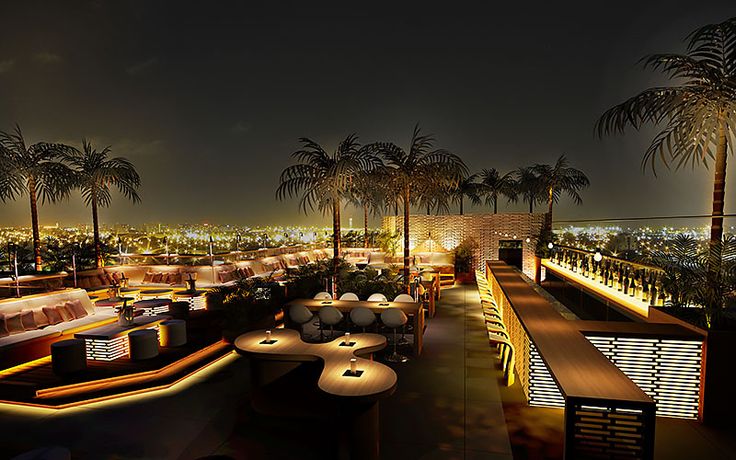Rooftop bars have become popular destinations, offering breathtaking views and a unique atmosphere for patrons. While these elevated spaces provide an enjoyable experience, ensuring the safety of visitors is paramount. This article explores the safety measures that rooftop bars should implement to create a secure and enjoyable environment for everyone.
2. Importance of Safety at Rooftop Bars
The allure of rooftop bars lies in their elevated locations, providing panoramic views and a distinctive setting. However, this height also brings inherent risks that must be addressed to prevent accidents and ensure the well-being of patrons. Safety measures are essential not only for legal compliance but also for maintaining a positive reputation and attracting a loyal customer base.
3. Structural Safety
3.1 Building Codes and Regulations
Rooftop bar must adhere to building codes and regulations to guarantee the structural integrity of the venue. This includes compliance with local construction standards, load-bearing capacities, and safety guidelines for elevated structures. Regular inspections by qualified professionals are crucial to identify and address any potential issues promptly.
3.2 Regular Inspections
Scheduled inspections should cover all aspects of the rooftop structure, from the flooring to the guardrails. Any signs of wear and tear, corrosion, or structural compromise should be immediately addressed. Routine maintenance and repairs are vital to prevent accidents and extend the lifespan of the rooftop infrastructure.
3.3 Emergency Exits
Marked and easily accessible emergency exits are non-negotiable. In the event of an emergency, patrons should be able to evacuate quickly and safely. Regular drills and staff training sessions on emergency procedures contribute to a prepared and efficient response.
4. Crowd Management
4.1 Capacity Limits
Adhering to maximum capacity limits is crucial for preventing overcrowding, which can lead to a variety of safety hazards. Rooftop bars must establish and enforce strict capacity guidelines to ensure that the venue can accommodate patrons comfortably without compromising safety.
4.2 Security Personnel
Trained security personnel play a vital role in maintaining order and responding to potential incidents. They should be positioned strategically to monitor crowd behavior, enforce capacity limits, and handle situations that may arise. Their presence also acts as a deterrent to unruly behavior.
4.3 Queue Management
If there is a waiting area or queue for entry, it is essential to manage it efficiently to prevent congestion and maintain a clear pathway for emergency exits. Queue barriers and staff supervision can help organize the flow of people, reducing the risk of accidents.
5. Slip and Fall Prevention
5.1 Slip-Resistant Surfaces
Given that rooftop bars are often exposed to the elements, surfaces can become slippery, especially during adverse weather conditions. Using slip-resistant materials for flooring and regular cleaning protocols are essential to minimize the risk of slips and falls.
5.2 Handrails and Guardrails
Sturdy and well-maintained handrails and guardrails are essential safety features on rooftop bars. They provide support to patrons and act as barriers to prevent accidental falls. Regular inspections should ensure that these safety features are secure and meet regulatory standards.
5.3 Adequate Lighting
Proper lighting is crucial for visibility, especially during nighttime operations. Illuminating walkways, stairs, and potential hazard areas enhances safety by reducing the likelihood of trips and falls. A well-lit rooftop not only enhances safety but also contributes to the overall ambiance of the venue.
6. Fire Safety
6.1 Fire Extinguishers
Rooftop bars must be equipped with fire extinguishers in easily accessible locations. Regular maintenance and checks ensure that these firefighting tools are functional in case of an emergency. Staff should be trained in the proper use of extinguishers to respond swiftly to potential fire incidents.
6.2 Evacuation Plans
Developing comprehensive evacuation plans is essential for any venue, and rooftop bars are no exception. Clear exit routes, evacuation procedures, and designated assembly points contribute to a safe and organized evacuation in the event of a fire or other emergencies.
6.3 Smoking Policies
If smoking is allowed on the rooftop, strict policies should be in place to prevent fire hazards. Designated smoking areas with proper disposal units should be established, and signage should communicate the importance of responsible smoking practices.
7. Weather Considerations
7.1 Wind Barriers
Rooftop bars are exposed to the elements, including strong winds. Installing effective wind barriers not only enhances the comfort of patrons but also contributes to safety by preventing objects from being blown away and reducing the risk of patrons being buffeted by gusts.
7.2 Shelter Options
Providing sheltered areas or retractable canopies allows for continued operation during light rain or excessive sunlight. These options not only improve the overall customer experience but also contribute to safety by protecting patrons from adverse weather conditions.
7.3 Lightning Safety
During thunderstorms, rooftop bars should have lightning safety protocols in place. Patrons should be promptly moved to sheltered areas, and operations should be temporarily suspended until the weather improves. Lightning rods and other protective measures can further enhance safety during electrical storms.
8. Food and Beverage Safety
8.1 Hygiene Practices
Maintaining high standards of cleanliness in food preparation and service areas is crucial for preventing foodborne illnesses. Regular sanitation practices, proper storage, and adherence to food safety regulations contribute to a safe and enjoyable dining experience.
8.2 Responsible Alcohol Service
Rooftop bars often serve alcoholic beverages, necessitating responsible alcohol service practices. Training staff to recognize signs of intoxication, implementing age verification measures, and promoting responsible drinking contributes to a safer environment for both patrons and staff.
8.3 Allergen Awareness
With an increasing number of people having food allergies, rooftop bars must be vigilant about allergen awareness. Clear menu labeling, staff training on allergen handling, and communication with patrons about potential allergens in dishes are essential to prevent allergic reactions.
9. Health and Sanitation
9.1 Cleanliness Standards
Maintaining cleanliness extends beyond food areas to the entire venue. Regular cleaning schedules for tables, chairs, restrooms, and common areas are essential to create a hygienic environment. High-touch surfaces, such as door handles and railings, should be disinfected frequently to prevent the spread of germs.
9.2 Sanitizer Stations
Providing hand sanitizer stations throughout the rooftop bar encourages patrons and staff to maintain good hand hygiene. Placing these stations at entry points, near restrooms, and in other high-traffic areas reinforces the commitment to health and sanitation.
9.3 First Aid Facilities
Having well-equipped first aid facilities and trained personnel on-site is crucial for handling minor injuries or health emergencies. A stocked first aid kit, clearly marked first aid stations, and staff trained in basic first aid procedures contribute to a swift and effective response in case of medical incidents.
10. Staff Training
10.1 Emergency Response Training
All staff members, including servers, security personnel, and management, should undergo comprehensive emergency response training. This training should cover evacuation procedures, first aid, fire safety, and other critical aspects to ensure that the staff can respond efficiently in any emergency situation.
10.2 Customer Service Training
In addition to safety protocols, customer service training is vital for staff interacting with patrons. Courteous and attentive staff contribute to a positive atmosphere and can also assist in crowd management. Training programs should emphasize communication skills, conflict resolution, and the importance of prioritizing customer safety.
10.3 Continuous Education
Given the evolving nature of safety standards and regulations, ongoing education is essential for staff members. Regular training sessions and updates on safety protocols, industry best practices, and new developments in safety technology ensure that the entire team remains well-informed and capable of upholding safety standards.
Nestled high above King & Calhoun Street, Ritual Rooftop Restaurant & Lounge is a place that brings people from all different walks of life together. With the greenery and fresh seafood, you are transported to Tulum, the main inspiration. When the night sky drifts upon us, the DJs create a vibrant atmosphere. An elevated experience that gathers a community to awaken your senses in our jungle castle. Join us in Charleston, South Carolina
11. Conclusion
Ensuring the safety of patrons and staff at rooftop bars requires a comprehensive and proactive approach. From structural considerations to crowd management, slip and fall prevention, fire safety, and health protocols, each aspect contributes to creating a secure environment. Rooftop bar owners and operators must prioritize ongoing training, regular inspections, and the implementation of the latest safety technologies to provide a memorable and safe experience for everyone.
In conclusion, the success of a rooftop bar goes beyond the view and ambiance—it hinges on a commitment to safety. By integrating and consistently enforcing the discussed safety measures, rooftop bars can create an environment where patrons can relax, socialize, and enjoy the unique experience without compromising their well-being. As the hospitality industry evolves, safety should remain a top priority, ensuring that rooftop bars continue to be sought-after destinations for locals and tourists alike.




